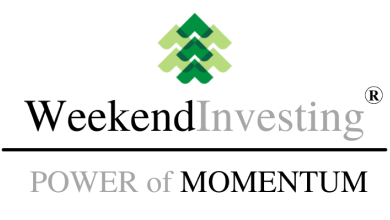Where is the market headed?
Markets appear to be drifting lower, with sentiment showing signs of fatigue. The Trump tariff narrative continues, with a 50% duty on copper effective August 1st and talk of a 200% levy on pharmaceuticals, though its impact on Indian pharma remains unclear. Tariff-related headlines and speculation around SEBI’s potential action in F&O are adding to the uncertainty. While no major concerns have emerged yet, the absence of positive triggers is weighing on the market.
Market Overview
Nifty is down 0.47%.

Nifty Next 50
Nifty Junior is down 0.23%.

Nifty Mid and Small Cap
Mid caps is down 0.28%.
Small caps is down 0.07%.


Bank Nifty
Bank nifty is down 0.45%.

GOLD
Gold went up by 0.37%.

Advance Decline Ratio
At close, market breadth was weak, with 211 advances and 290 declines, reflecting broad-based selling pressure.

Heat Maps
In the Nifty heat map, stocks like Bharti Airtel, Asian Paints, ITC, Nestle, Infosys, Kotak Bank, and Shriram Finance were under pressure, with no major gainers standing out.
In the Nifty Next 50, some energy names like JSW Energy, PFC, and REC saw modest gains. Lodha and DLF remained largely flat, while HAL, Divi’s Labs, D-Mart, Naukri, and BBL edged lower.


Sectoral Overview
Defence stocks were sharply lower, down nearly 2% today, extending a 3.5% drop over the past month. Despite this, defence remains the top performer over the last three and six months, up 42% and 38% respectively. Over a one-year period, however, gains have moderated to 6%.
Other sectors also saw pressure: PSU Banks: -0.8%, IT: -0.79%, Consumption, Central PSUs, Infrastructure, Services, Pharma, FMCG were all down.
On the positive side, Real Estate edged up today, continuing its volatile pattern with 1.2% up over the week but down 5% for the month. Overall, no decisive trends emerged across sectors.

Sector of the Day
Nifty IND Defence
Defence seems to be retesting levels last seen at the end of May, indicating nearly two months of consolidation. Whether this marks a potential top-out remains to be seen.
Key drags on the defence index included:
Bharat Dynamics, Solar Industries, Garden Reach Ship, Zen Technologies, and Astra Microwave.


Story of the Day: Why Investor Psychology Is Above Stock Market Returns
Are sleepless nights caused by investments? That may be the first sign of imbalance. Investing should be a peaceful activity that compounds quietly in the background, not something that disrupts day-to-day life. If an investment causes anxiety, it likely means excessive noise—be it from overexposure to volatility, excessive leverage, or chasing fast-moving stocks without a long-term vision.
It’s possible that the portfolio is tilted towards assets beyond one’s risk tolerance. Maybe the selection lacks quality or is too speculative. Or perhaps the problem lies in expectations—chasing daily moves rather than compounding over time. With nearly 30 years of experience, one truth stands firm: the sooner one reaches a point where investments don’t disturb sleep, the more sustainable and rewarding the journey becomes.
Consider two hypothetical strategies: Strategy A delivers 40% annual return, while Strategy B gives 25%. On the surface, most would pick Strategy A. But the path matters. Strategy A is extremely volatile—sharp ups and downs that erode capital before recovery. Strategy B, while returning less, compounds calmly and steadily. When experienced in real time, Strategy A often drives investors to exit after a major fall. Only a few remain until the end.
The peaceful journey of Strategy B helps investors stay the course. Volatile stocks may or may not recover quickly—and waiting through such phases could take years. It’s easy to fantasise in hindsight: “I should have bought Apple in 1992” or “Why didn’t I invest in HDFC Bank in 2003?” But such hindsight rarely accounts for the painful phases in between. In reality, investors in Strategy B enjoy fewer shocks, higher survival chances, and peace of mind—even if returns are slightly lower.
In both life and investing, the pursuit is for safety, growth, and peace of mind. But this balance is often elusive, especially as the mind plays tricks. Core doubts repeatedly surface: “Where should I invest within equities?”, “Will I always be one step behind the market?”, “Is there a smarter way to stay invested across market cycles?” These are not technical questions—they stem from inner psychological friction.
For example, the fear of the unknown pushes investors to choose clarity over optimality. Too many options create anxiety, leading to indecision. Losses feel twice as painful as gains. This loss aversion makes drawdown feel worse, especially when amplified by memories of past crashes. Even small dips trigger panic: “Is this the next big fall?”
After every market move, the brain screams, “I should have known!” Overconfidence builds expectations of perfect timing—yet reality proves otherwise. Emotional reasoning then takes over. Investors get attached to stocks and let feelings override facts. Regret aversion kicks in: even when rational analysis says, ‘Exit now’, fear of booking a loss causes inaction.
The emotional cycle continues. Every uptrend missed triggers FOMO. Every party conversation turns painful if others boast about stocks that were skipped. Investors wonder, “Should I buy now at 60, even though I missed it at 20?” The idea that drawdowns can be avoided while still capturing upside is tempting—but often unrealistic.
Psychologically, markets condition investors to overestimate the probability of crisis. Headlines worsen this by shaping perceptions of risk far beyond the actual data. Herding bias, media-driven panic, and emotional trading decisions become commonplace.
Investing without a plan is like investing with pure emotion. While some may succeed that way, most cannot. The solution? Rules. Balance. A hedge. A plan that is not tinkered with every week. One such plan includes diversifying across market segments—large-cap, mid-cap, small-cap—and adding a gold component.
This 25-25-25-25 mix ensures that some part of the portfolio always works. During normal times, three-fourths of the portfolio may perform well. Even within market phases, one segment usually shines while others take a backseat. A study over nine years showed that this combination reduced drawdowns while still delivering decent returns—especially when stronger stocks were chosen within each segment.
Investing is psychological warfare. And with balance, discipline, and structure, it can be navigated. The current global landscape is full of uncertainties—from geopolitical tensions to systemic financial risks. Therefore, it’s critical to move forward with confidence, calm, and a holistic approach.
Progress in markets requires more than timing. It demands internal balance, realistic expectations, and a mindset built for the long haul. Keep emotions in check, follow a plan, and focus on the journey—not just the outcome.







